Design Strategy and Management
At ServiceNow, the goal was to create seamless, easy-to-use workflow experiences that run Internal Technologies across an extensive portfolio of organizations. My main focus in the Digital Talent Experience team was to ensure that experiential design was first and foremost in our development process. I worked with cross-functional teams and leaders of the company to create a vision and plan to carry out user-centered experiences.
At ServiceNow, the goal was to create seamless, easy-to-use workflow experiences that run Internal Technologies across an extensive portfolio of organizations. My main focus in the Digital Talent Experience team was to ensure that experiential design was first and foremost in our development process. I worked with cross-functional teams and leaders of the company to create a vision and plan to carry out user-centered experiences.
Experience design thinking case study: Enterprise Ramp-Up
Research
Re-evaluate and find out the moments-that-matter for the new hires navigating their first 90 days and for the managers supporting the new hires ramping up. We focused on a wide range of subjects from all positions across 3 different continents. Sessions included a collaborative approach using Miro to gather highlights and pain points in peoples experiences.
Remote design sprints
Working based off of google ventures 5 day design sprint framework, I customized sessions that would fit appropriately into our teams schedules. The design sprints would either last 2-4 hours or 1-5 days in length. The goal of the design sprints were to take a larger problem and break it down into areas of focus that we could build upon in an agile process.
Working based off of google ventures 5 day design sprint framework, I customized sessions that would fit appropriately into our teams schedules. The design sprints would either last 2-4 hours or 1-5 days in length. The goal of the design sprints were to take a larger problem and break it down into areas of focus that we could build upon in an agile process.
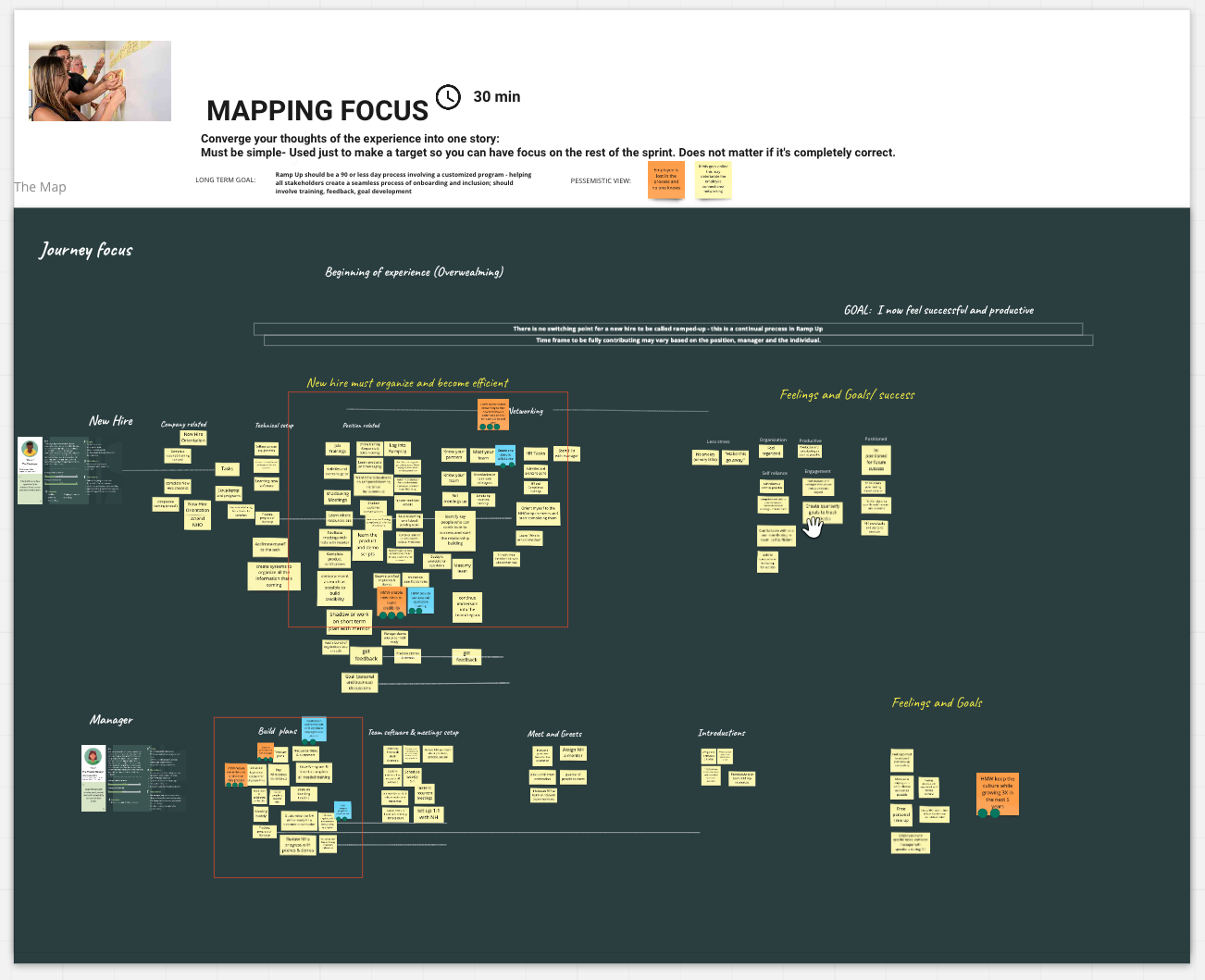

Solution:
The outcome of the prior processes was to create an onboarding solution for new hires that makes the experience easy to use, engaging, dialed in on the moments that matter and fluid.
Below are a few examples of where we brought solutions to the pain points in the experience that provided a framework for learning in the now and being successful in your first 90 days.
The outcome of the prior processes was to create an onboarding solution for new hires that makes the experience easy to use, engaging, dialed in on the moments that matter and fluid.
Below are a few examples of where we brought solutions to the pain points in the experience that provided a framework for learning in the now and being successful in your first 90 days.
Primary persona:
The moral of the story is, for projects as simple as a "Ramp-up" new hire widget, you need to apply design and experience thinking throughout the process in order to achieve all your user's goals.
Below are a few examples of applying this thinking to the UI that covered all the stakeholder's needs from our focus groups:
1. Networking: Ability to meet new people remotely in the flow while onboarding
2. Customization: Managers can create custom plans and onboarding tasks based on their new hire's position.
3. Learning: Integration of various learning activities embedded inside the widget vs taking the new hire to different areas around ServiceNow.
4. Engaging: Create a gamified approach with milestones and rewards based on the progress the new hire has achieved.
5. Ratings: Feedback comes through various steps in the new hire ramp-up journey where managers can tweak their plan for the future.
6. Support: Giving access to easy support and help as if you were in the office sitting next to someone.
Bringing "delight" and a journey based experience through the process of onboarding a new hire:
Sample screens in the flow
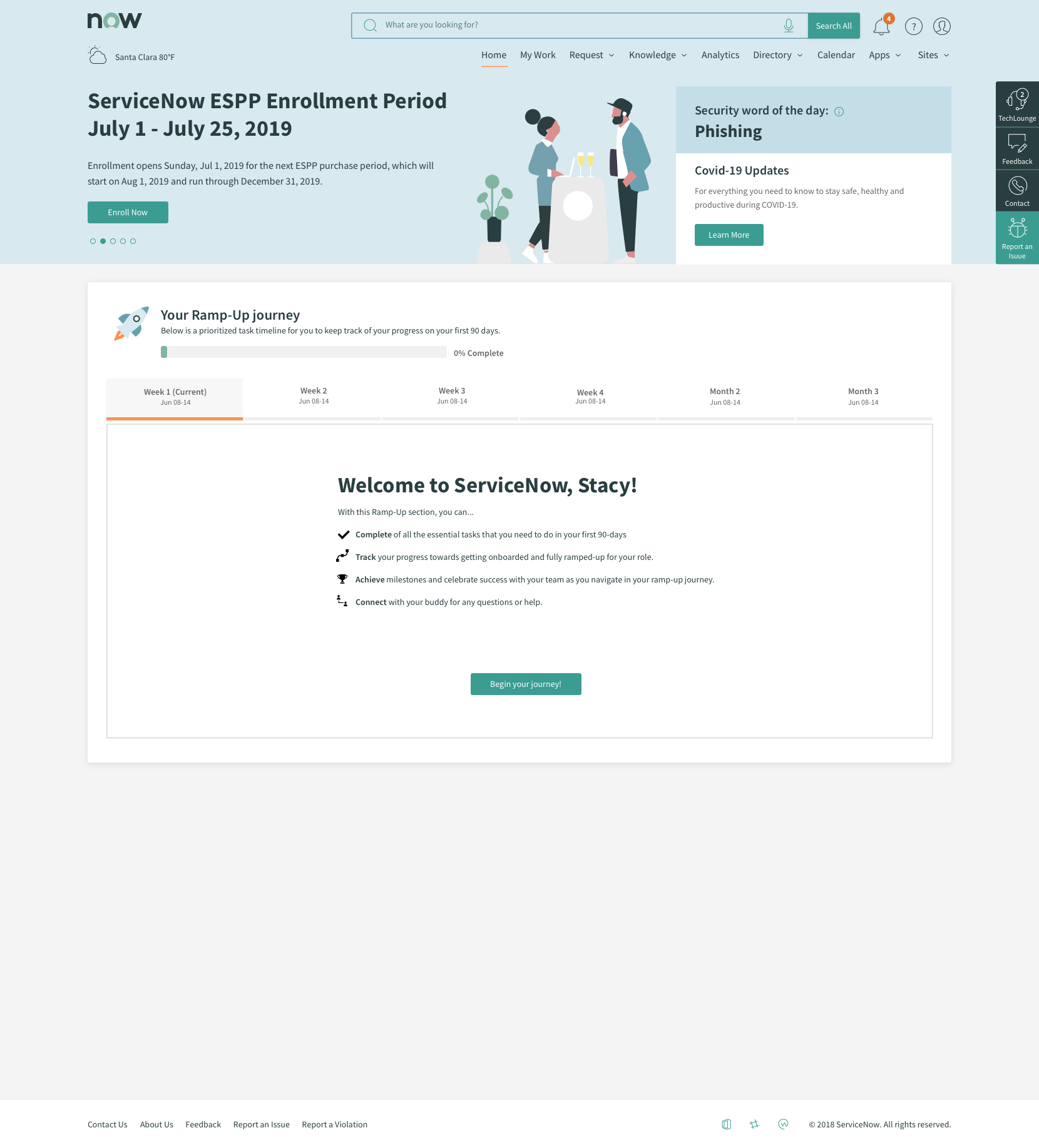
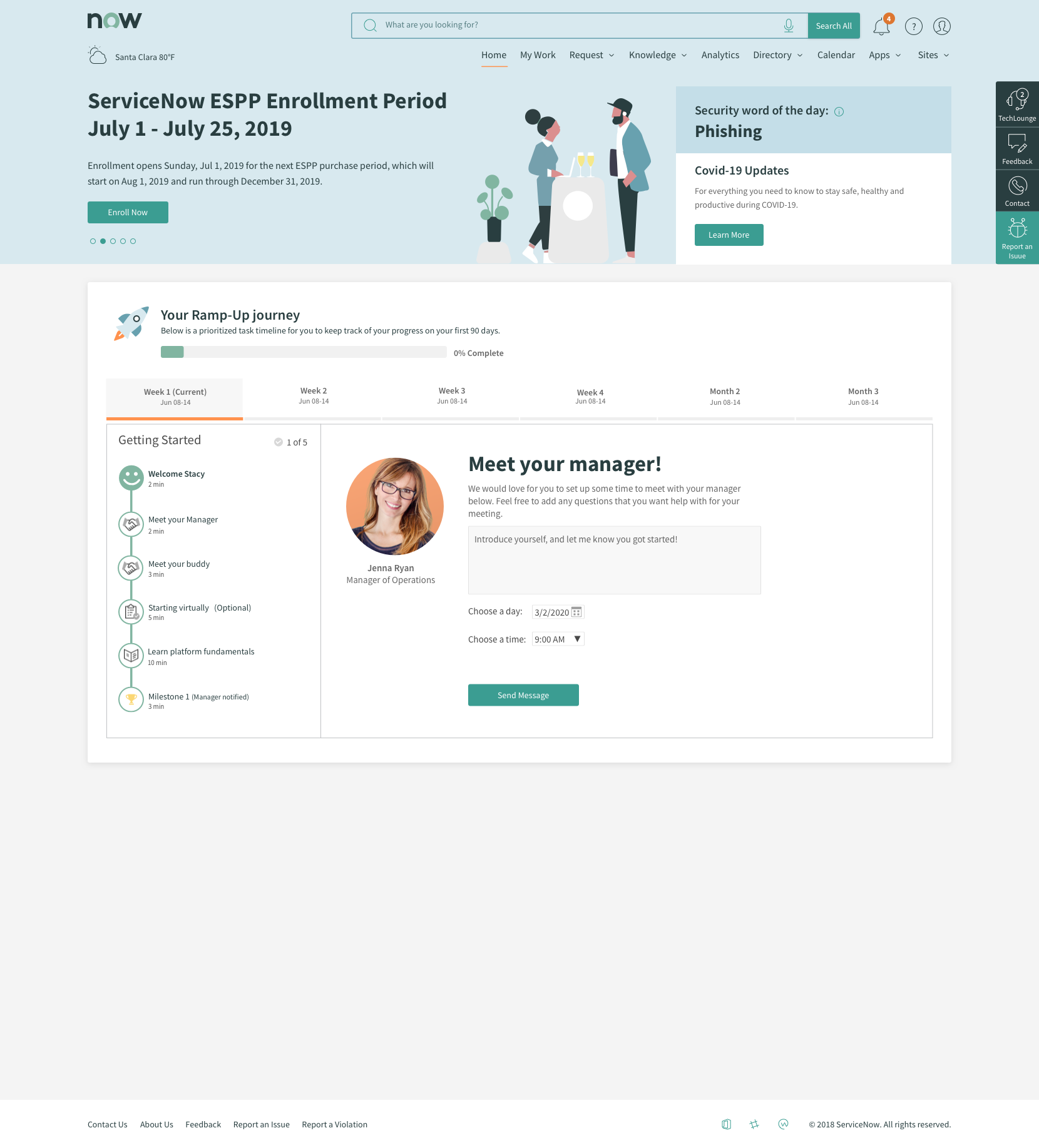
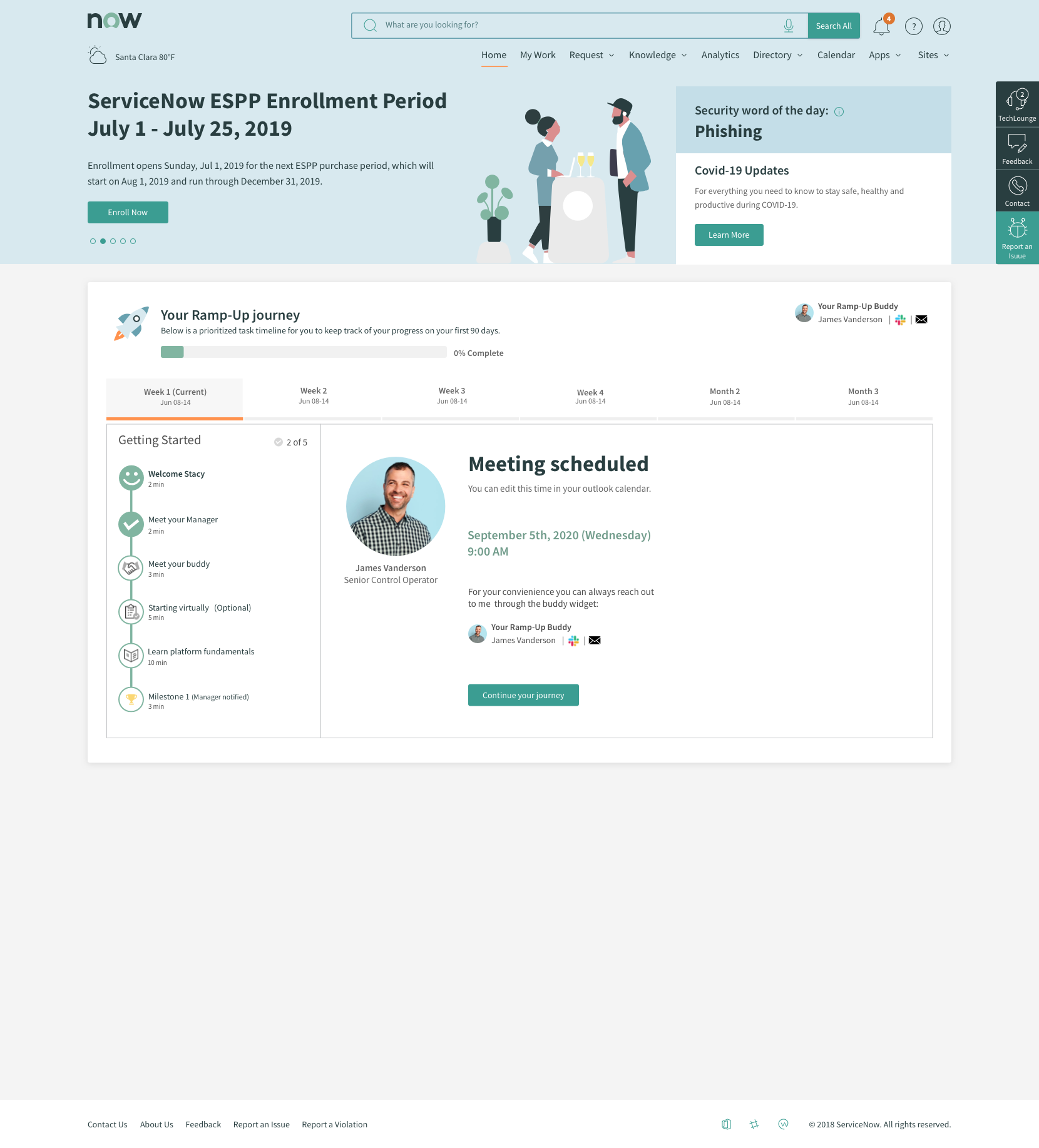
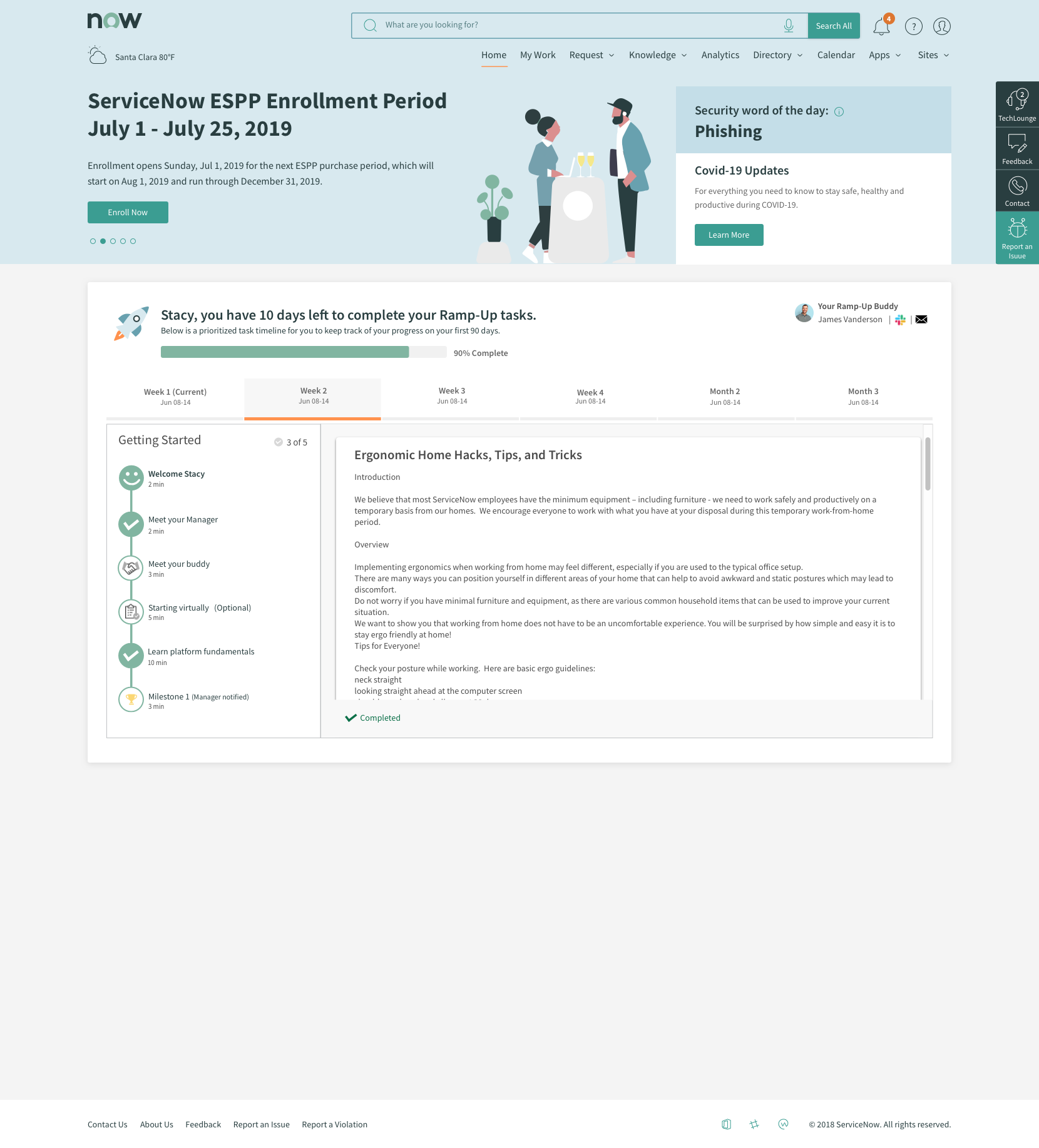
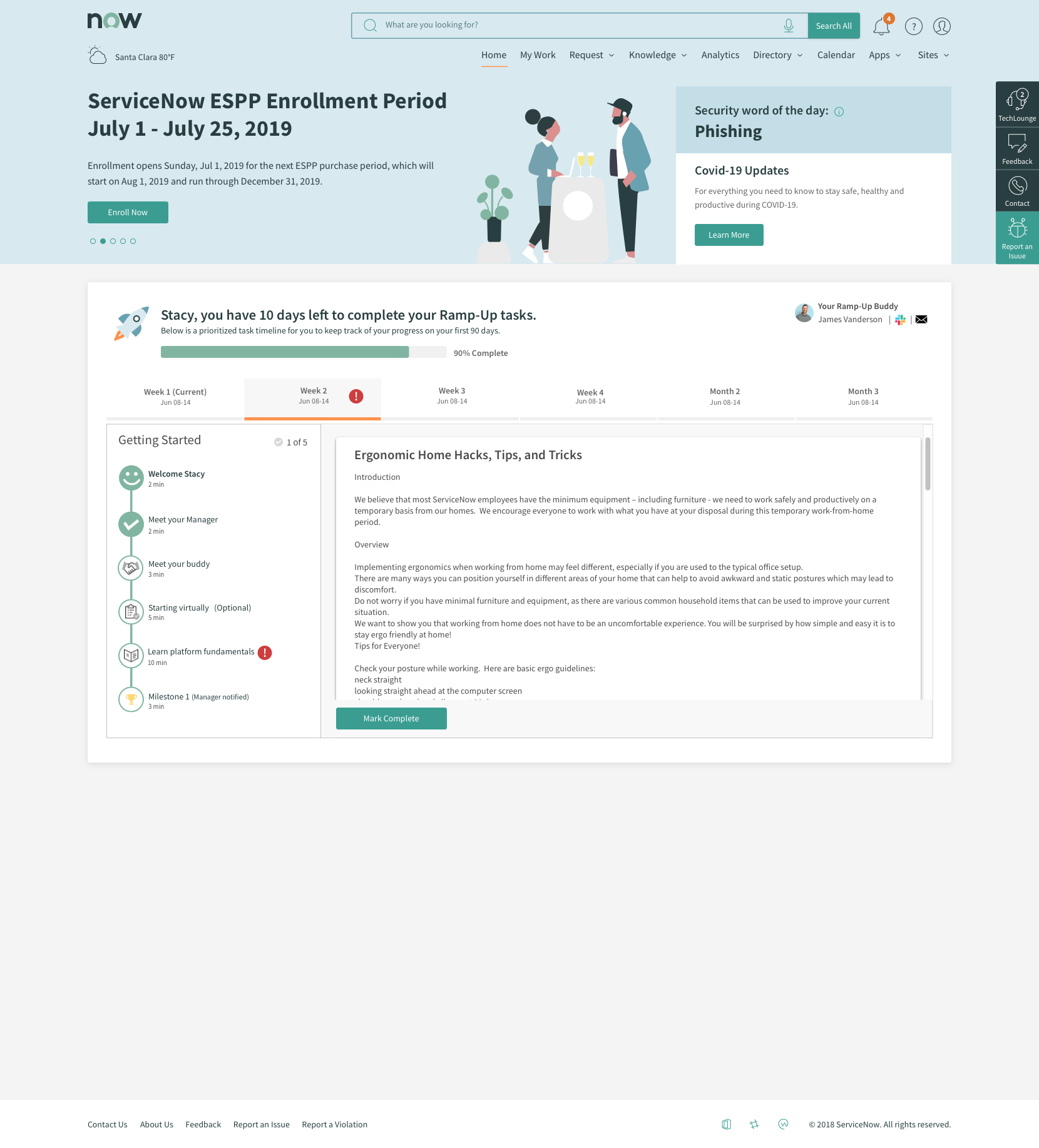
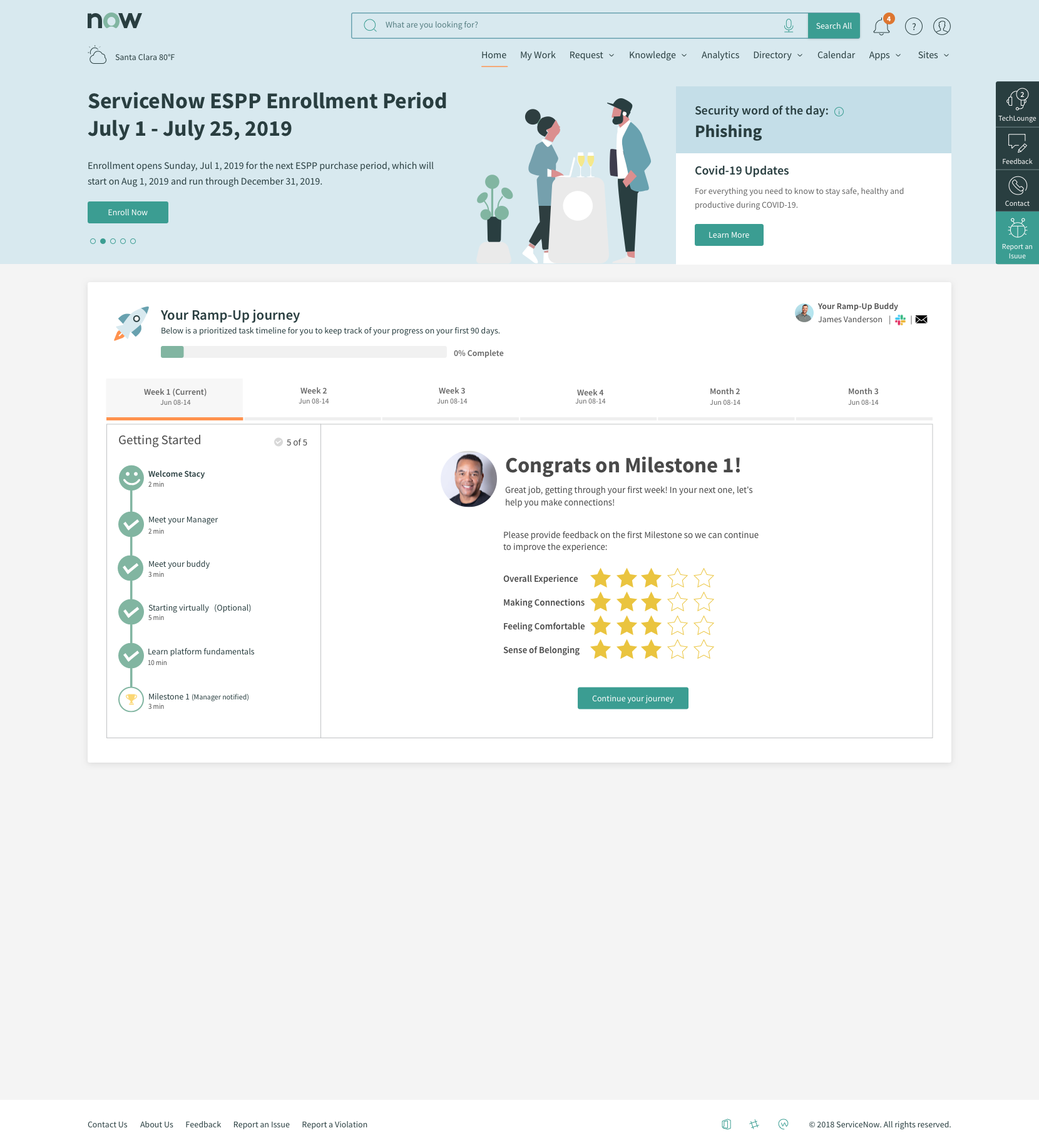
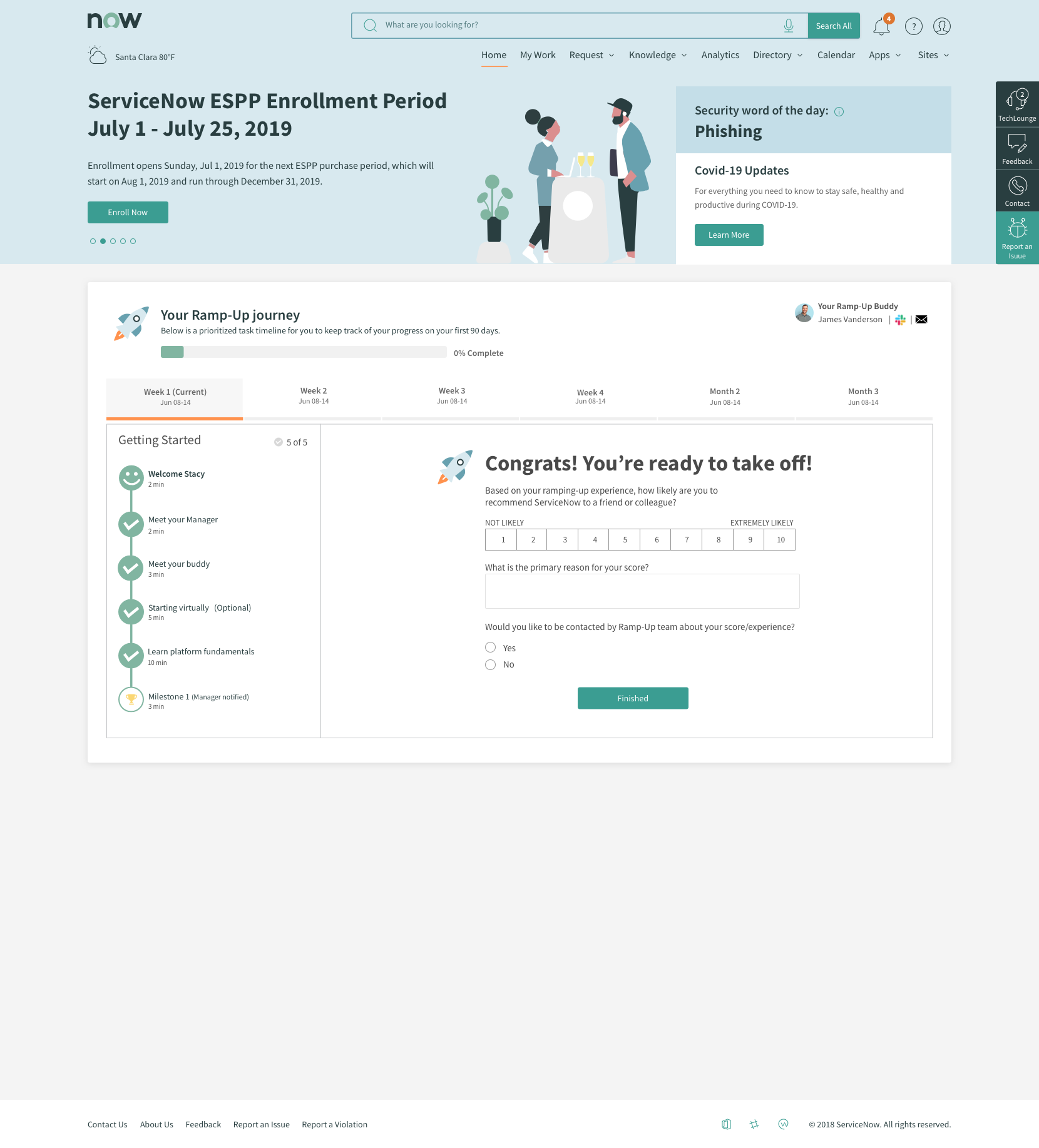
Running retrospective workshops with the team after feedback has come in from testing and launch. Facilitating the feedback development, product, design and other stakeholders to drill down to vote on the most important items to change for upcoming processes.
Impact and quotes from our leaders
“I see you made some great progress here. Definitely looking forward to this for our employees and identity. Would love to see that yacht come to life.” - Rajeev Sethi
“I want to call out the team and the way you're working together and frankly, just the way you're showing up. I feel like you're getting tighter in your stories. You're getting punchy you're really kind of hitting the key points really crisply. Really excited about the progress we're making. So, kudos to all of you.” – Ryan Weber
“I love how the team worked together to figure out release 1 and 2 within those [resource availability] constraints.” – David Reed
•
A brief look at the Digital Talent Experience Design process.
News coverage on ServiceNow Ramp Up
https://www.forbes.com/sites/servicenow/2021/07/01/honeymoon-or-heartbreak-these-3-months-can-make-or-break-a-career/?sh=3ef9f4c620b2
https://www.forbes.com/sites/servicenow/2021/07/01/honeymoon-or-heartbreak-these-3-months-can-make-or-break-a-career/?sh=3ef9f4c620b2